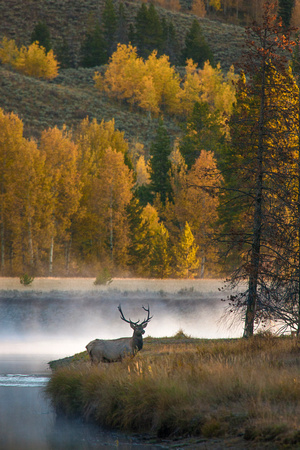Bull Elk on the Snake River
Bull Elk on the Snake River. Teton Mountains area. The elk or wapiti (Cervus canadensis) is one of the largest species of deer in the world, and one of the largest land mammals in North America and eastern Asia. It was long believed to be a subspecies of the European red deer (Cervus elaphus), but evidence from a 2004 study of the mitochondrial DNA indicates that the two are distinct species.
This animal should not be confused with the larger moose (Alces alces), to which the name "elk" applies in Eurasia. Apart from the moose, the only other member of the deer family to rival the elk in size is the south Asian sambar (Rusa unicolor).
Elk range in forest and forest-edge habitat, feeding on grasses, plants, leaves, and bark. Although native to North America and eastern Asia, they have adapted well to countries where they have been introduced, including Argentina, Australia, and New Zealand. Their great adaptability may threaten endemic species and ecosystems into which they have been introduced.


